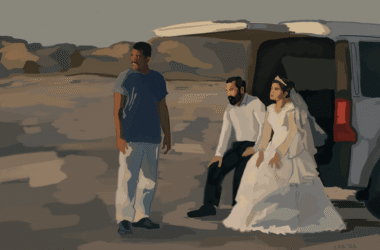This month, men have been wearing their charitable aspirations on their upper lips, sporting Movember ‘staches of all sizes and descriptions. Meanwhile, across the globe, a vast cohort of people have been letting their imaginations, rather then their facial hair, run wild. Less visible than sporting a ‘stache, but no less charitable, National Novel Writing Month has been quietly underway since the first, and is set to conclude at midnight (in your local time zone) on Nov. 30.
NaNoWriMo’s charitable outlet, the Young Writers Program, tries to get young students in K-12 programs involved in writing during November, connecting youth librarians, homeschooling parents, and standard schools with educational resources and motivational tools to encourage creativity and literacy. NaNo also engages with Room to Read, a nonprofit that builds libraries for children in countries like Laos, Vietnam, Nepal, and Cambodia. Participants are invited to donate through the main website, and proceeds from NaNo merchandise like shirts, bags, coffee cups, and journals also help keep servers running and young writers inspired.
NaNoWriMo was founded in 1999 by freelance writer Chris Baty as a way to kickstart the actualization of creative projects that flounder in the back of the brain, and to bring a sense of togetherness to often isolated writers-to-be. Since then, NaNo has become incorporated under The Office of Letters and Light, a nonprofit based in Oakland. In 1999, 21 people participated and six achieved the event’s goal, or ‘won,’ by writing 50,000 original words within November’s 30 days.
Most commercial novels are between 75,000 and 90,000 words, making NaNoWriMo’s target word count a solid step, for many, toward the dream of being a published author. Dozens of authors have indeed gone on to publish works they began with NaNo. For a rare few, the pressure of a deadline and the supportive community of fellow strugglers found through NaNo’s online forums is just what’s needed to transform aspiration into reality.
Those who go on to publish their NaNo novels are a small fraction of an already elite coterie of people who actually ‘win’ in the 30-day period. (Where do those 720 hours go?) In 2010, there were a whopping 200,500 participants, but only 37,500 winners. The fraction of those who have won has remained consistently around 13 to 15 per cent during NaNo’s 11 years of existence. While that makes its track record as a motivational tool dubious, or says something about the staying power of the muscle we call the brain, there’s no doubt that the endeavour of NaNo itself can be a fun and inspiring exercise, win or lose.
NaNoWriMo calls itself “30 days and nights of literary abandon.” Whether you abandon your sanity or your novel by the end of it is very much up to you—but participating is a rite of passage for many up-and-coming authors and philanthropists alike.
Sharpen your pencils, get the crumbs out of your keyboard, and set the coffee pot to automatic. Don’t forget: there’s a whole year to train for next year’s authorial marathon.








